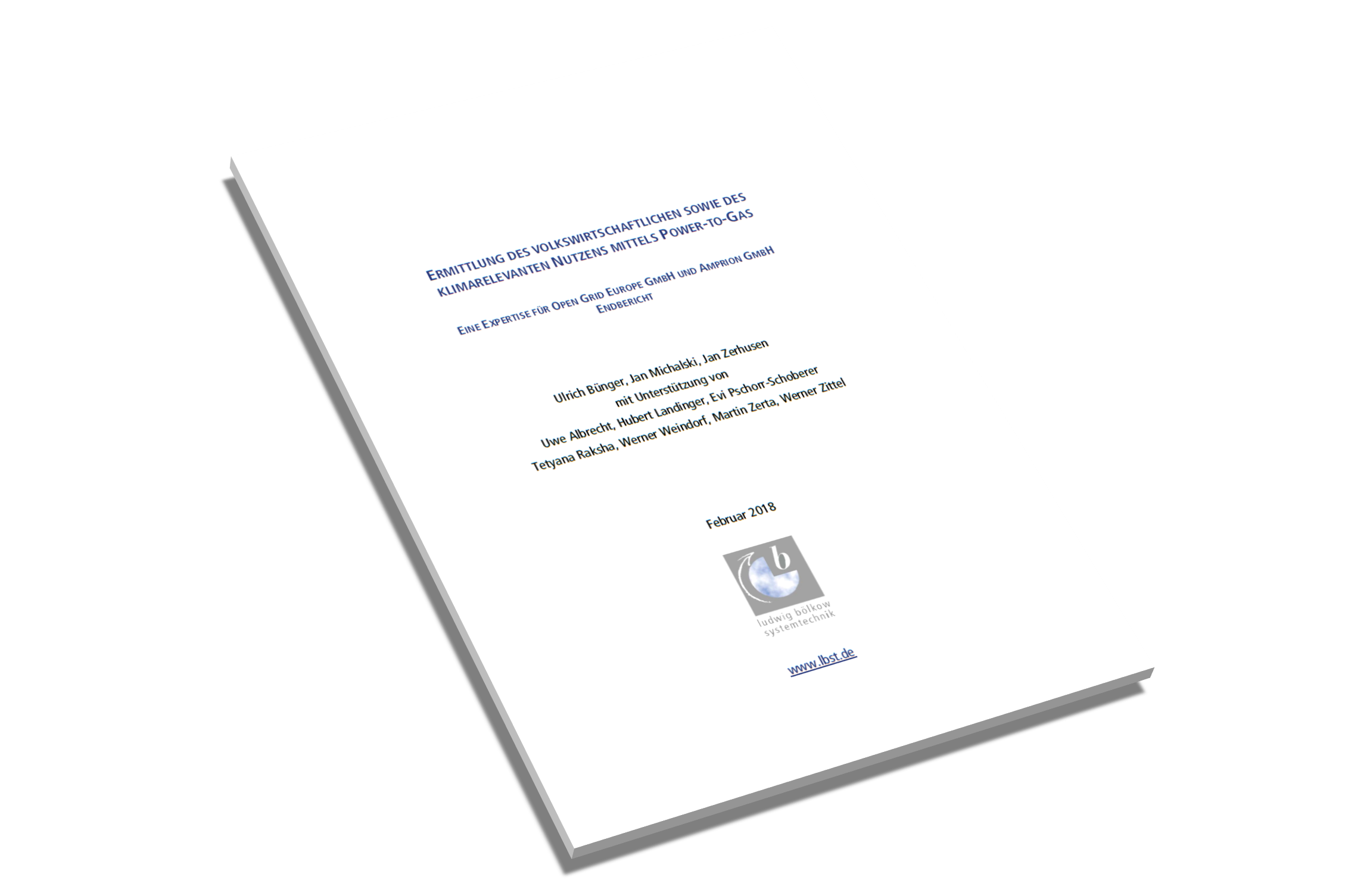Determining the economic and climate-relevant benefits of power-to-gas (only in German)
In spring 2017, Amprion GmbH and Open Grid Europe GmbH jointly commissioned Ludwig-Bölkow-Systemtechnik GmbH (LBST) to analyse the economic and climate-relevant impacts of a broad introduction of power-to-gas (PtG) in comparison to an “all-electric” world for Germany by 2050. For this purpose, the electricity sector with its inherent flexibility options was modelled in its entirety, except for the electricity distribution grid.
Renewably produced electricity is seen as the most important energy source of the Energiewende (energy transition). In addition to traditional electricity applications, it is expected to serve all other end-use sectors for the provision of power (mobility) and heat (households and industry) in the future, as well as being used for the synthesis of basic materials beyond the industrial electricity demand. It is therefore assumed that electricity demand will more than double by 2050 compared to today’s volume.
In the context of this study, sector coupling refers to the coupling of the electricity and gas grids for the optimal integration of renewable energies into the end-use sectors. Even if the so-called “Netzentwicklungsplan” (Grid Development Plant) is successfully implemented, the grid may not be able to provide energy distribution on its own in case of further growth of renewable generation (NEP Electricity 2030 Version 2017). Through sector coupling, the electricity grid expansion could be complemented cost-efficiently by the energy transport and storage capacities of the existing gas grid by 2050 in the medium and long term.
The introduction of PtG was illustrated in three selected applications/sectors (cars/mobility, domestic heating/heating and substitution of fossil hydrogen production in industry), assuming integration of additional renewable electricity on both the generation and consumption side beyond NEP electricity.
Core results at a glance:
- Flexibility benefits of power-to-gas (i.e. storage and use of existing infrastructure) outweigh efficiency disadvantages (i.e. conversion losses), especially in the transport sector and industry.
- Inclusion of gas storage capacities as seasonal energy storage via power-to-gas is inevitable if the ambitious climate protection targets – reduction of CO2 emissions by 95% compared to 1990 by 2050 – are to be achieved economically, in addition to short-term battery power storage.
- In the long term, i.e. once reaching an annual RES share of approx. 400-450 TWh, power-to-gas can be a sensible supplement to the expansion of the electricity grids after realisation of the NEP measures.
- Compared to “all-electric” solutions, power-to-gas has negative CO2 avoidance costs due to the lower total investment for the same CO2 avoidance and thus offers an economically sensible way to achieve the set climate protection targets.
- End-use costs are a major cost driver in CO2 abatement.
- The more ambitious the climate protection targets by 2050, the more pronounced the advantages of power-to-gas, compared to an “all-electric” approach.
A shortened version of the study can be found under this link (only in German).

